In festivals, especially festivals with buffalo sacrifices, the pole is an important and indispensable object. The Bahnar people consider the pole as an intermediary connecting humans with gods, expressing people's wishes and ideas about life and the vast universe.
The Bahnar people's pole. Photo: Ho Anh Tien
Before the ceremony, the men in the village (mainly the elderly, skillful, and experienced) gather to make the pole. Under the direction of the village elder, without anyone telling them, some people search for the pole, some people whittle the bamboo, some people cut the bamboo, some people take care of carving and painting decorative motifs... The bigger the festival, the more elaborate the pole is with many details. Each detail on the pole not only beautifies and pleases the eyes of the attendees, but also represents many images in the life of the Bahnar people.
Meritorious Artisan Alip (Groi Wet village, Glar commune, Dak Doa district) said: “Usually, the pole is made about 3-7 days before the festival. To make a beautiful pole, you need to be skillful and calculate the appropriate decorative distances. The bigger the festival, the taller the pole, with more layers of decoration.”
The sun symbol is attached to the pole. Photo: XT
For festivals with buffaloes as sacrifices, before erecting the pole, they make a ring to tie the buffaloes and place it at the base of the pole. After finishing the ring, people place it at the mouth of the hole to bury the poles. On top of the poles are connected by 4 horizontal bars to form a sturdy lock, preventing the buffalo ring from moving out of the pole. The structure of the pole consists of the following parts: the base with a solid structure consisting of 4 pillars buried firmly at the 4 corners (jrang), the ends of the pillars touching the ground are gathered together, the remaining ends of the pillars spread out to the 4 corners and are connected to each other by 4 horizontal bars to form a relatively regular square. This horizontal bar can be made of bamboo or wood.
At the top of each horizontal bar is carved a circular symbol symbolizing freshness and vitality. The Bahnar people believe that this symbol is the symbol of the sun or the image of the tip of the fern (a type of fern that often grows along streams and is closely associated with the culinary culture of the Central Highlands). Sometimes this symbol is also called "the arm of the god". We often see this type of motif on the corner structures of the communal house and tombs of the Bahnar people.
People of Prang village (Dak To Pang commune, Kong Chro district) make a pole together. Photo: PV
At the four corners, people tie four tall, curved bamboo poles (gưng). The ropes are made from thin split bamboo strips folded into fish bones or from short bamboo segments. Sometimes people use small bamboo strips to create circles and link them together into long ropes that swing in the wind. One end of the rope is tied to the gưng, the other end is attached to objects shaped like birds (bamboo, wood) or squares, triangles with tassels at the corners. Artisan Alip added: Besides the function of beautifying, the tassels of the pole also act as scarecrows to scare away birds and protect crops.
The motifs with symbols of the universe are concentrated on the main pole. The bamboo used to make the main pole must be tall, large in diameter, straight, with sparse joints... The main pole is buried in the ground, right at the center of the base and firmly connected to the horizontal details. The decorations on the main pole are divided into many levels; the bigger the festival, the more levels the main pole has. The vivid motifs, painted in many colors, create a different highlight with the details with symbols of the universe. First of all, the symbol of the stars. They use 2 beautiful wooden or bamboo sticks, about 3 times longer than the diameter of the main pole, placed through the pole and perpendicular to each other to create the shape of a 4-pointed star. Each pole is attached with 2-3 stars or more, depending on the size of the festival.
The sun symbol is made up of thin, interwoven bamboo strips, creating a circle with many rays radiating around it. Photo: PV
Next is the moon - a permanent symbol in Bahnar sculptures, often seen decorating the roofs of communal houses, tombs, etc. The moon on the pole is a simple detail made of flat wood, carved into a crescent shape, attached across the main pillar. In particular, the sun is the most vivid symbol on the pole. It is made up of thin split bamboo strips interwoven to create a circle with many rays radiating around. This symbol often uses red as the main color.
On the top of the pole, people make a sharp tip like a spear pointing straight up to the sky or sometimes attach a dry gourd to the top because the gourd contains water, which is a symbol of fertility, the source of life for all things. The cosmic symbolic details on the pole do not exist alone, lying separately, but are connected together on the main pole to form a continuous axis. Therefore, the Bahnar people consider the pole a sacred image, a symbol of the divine and occupying an important position in life.
Regarding colors, the Bahnar people use three basic colors to paint the pole: Black symbolizes the earth, white symbolizes the sky, and red symbolizes the gods and human life. Later, they used many other colors to make the pole more prominent.
Thus, it can be seen that: The concept of the universe expressed on the Bahnar pole carries many images. That is the shadow of humans in life, the existence of supernatural beings and the manifestation of the vast universe. This affirms that the Bahnar's cosmological thinking is not outside the universality of human cosmological thinking. The pole is always placed right at the center of the space for performing and practicing rituals. Human activities take place around it.
Red is one of the basic colors used to decorate the pole. Photo: PV
After the festival, the Bahnar people do not collect or clean the pole but let it exist and deteriorate over time with the belief that the pole is a sacred object, touching it will lose its sacredness and be punished by Yang.
Source: https://baogialai.com.vn/bieu-tuong-vu-tru-tren-cay-neu-cua-nguoi-bahnar-post326188.html


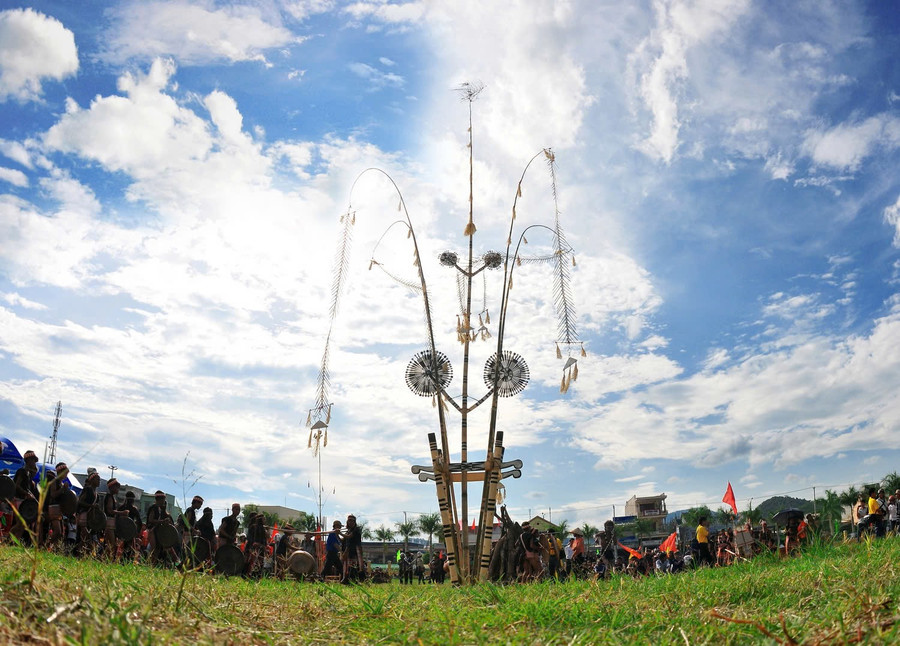
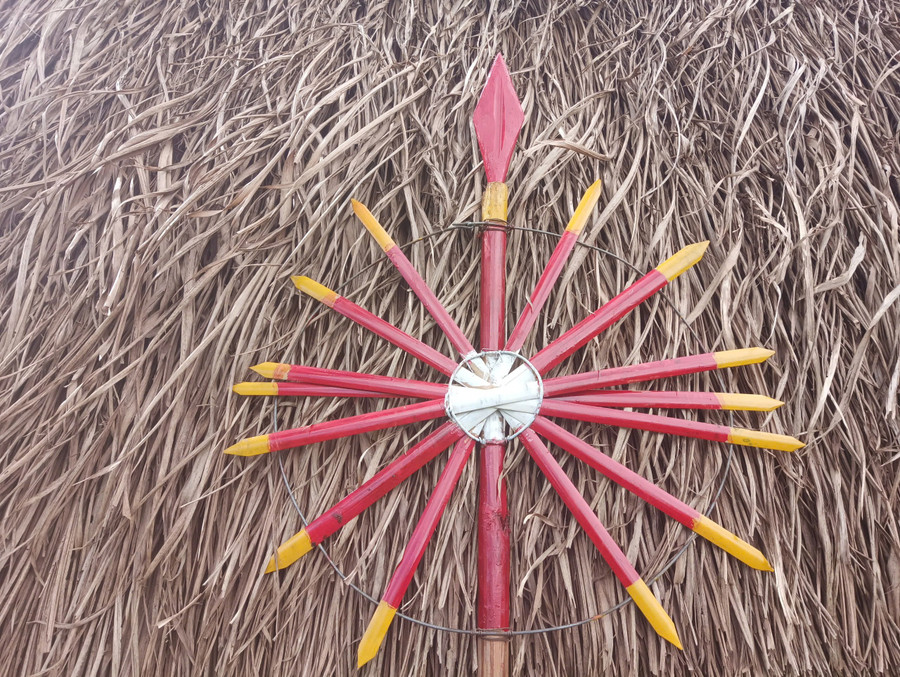
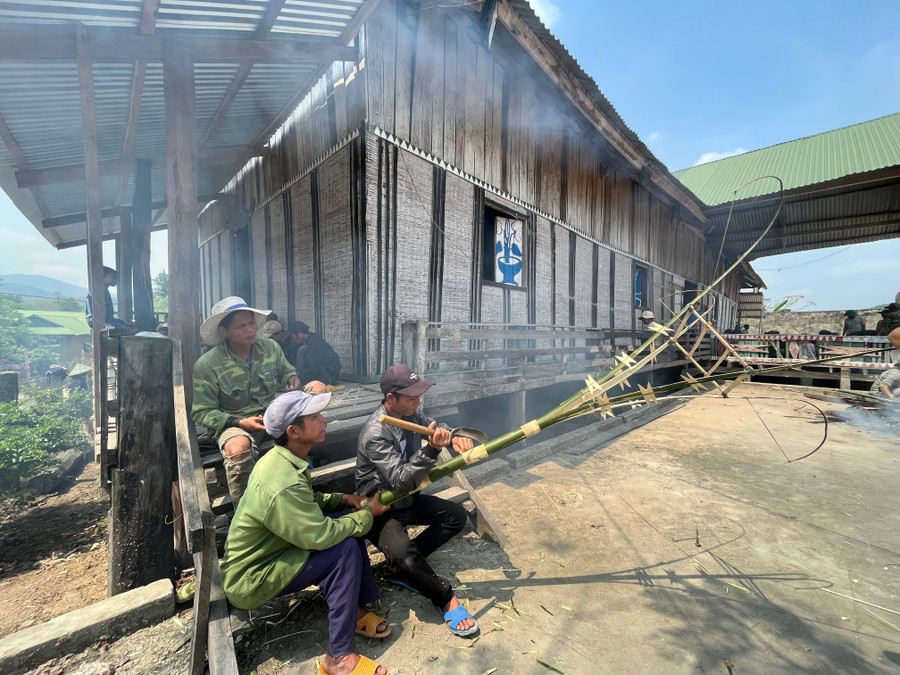
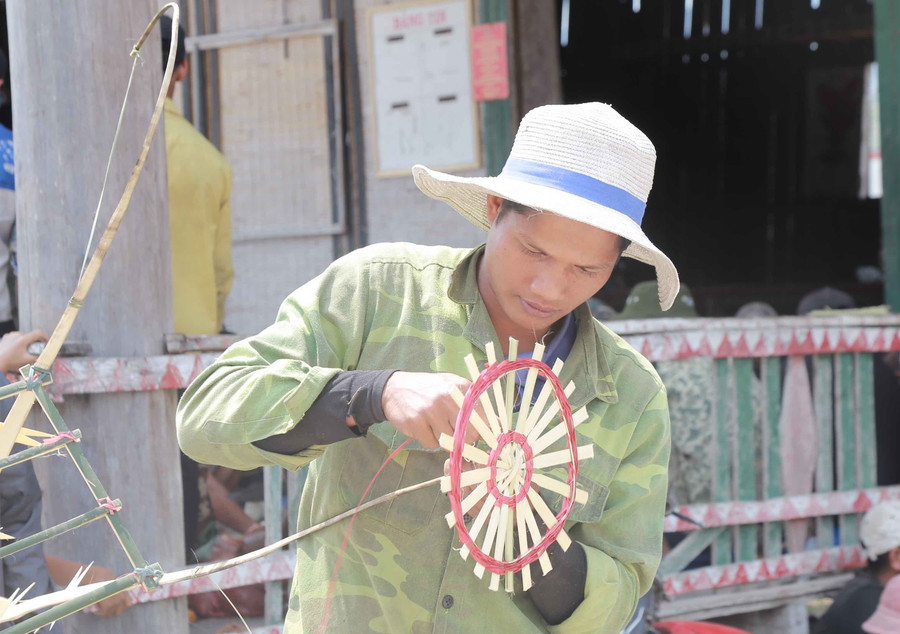
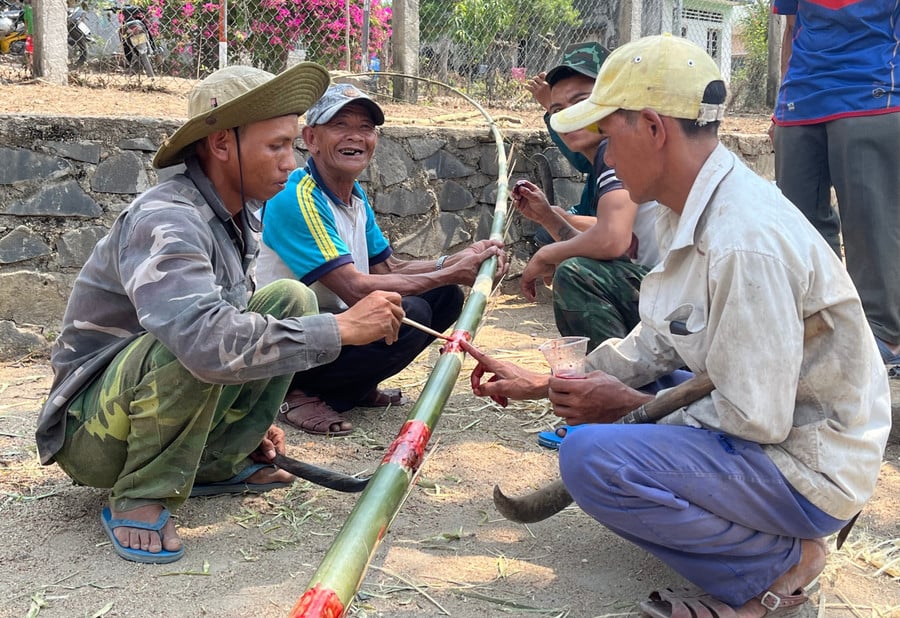




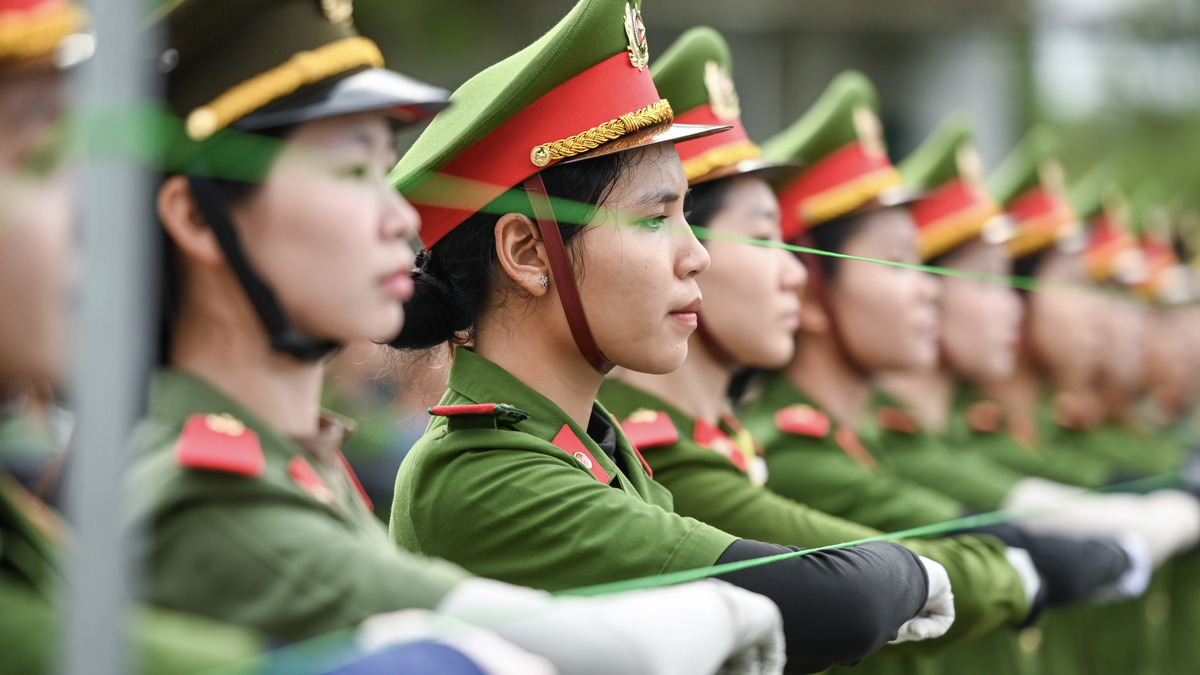








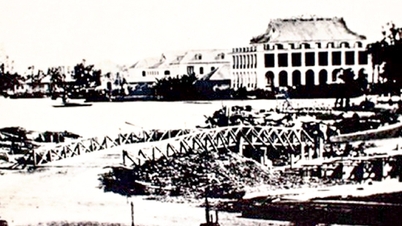





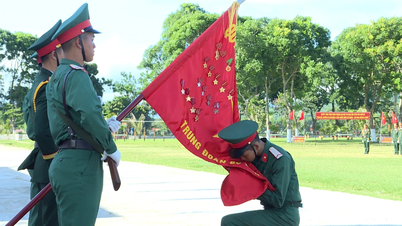
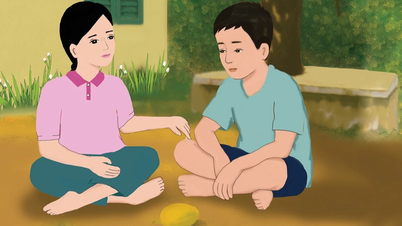
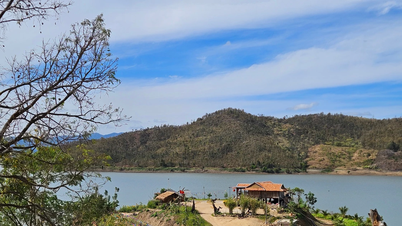
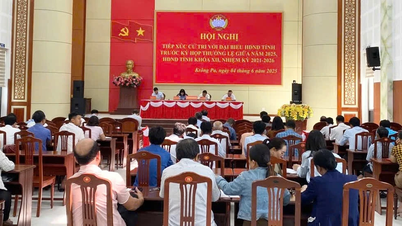
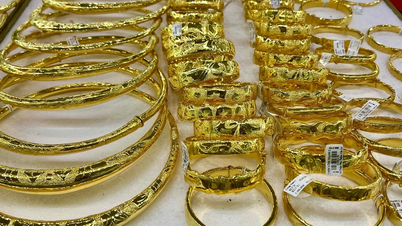

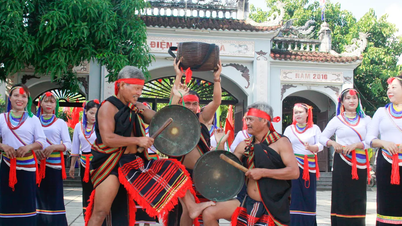

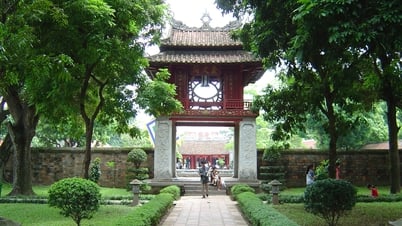

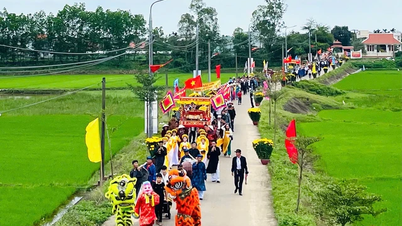

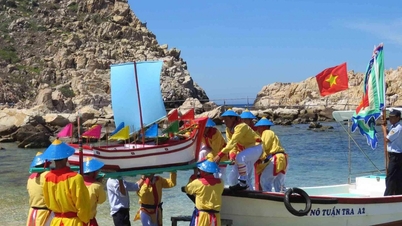

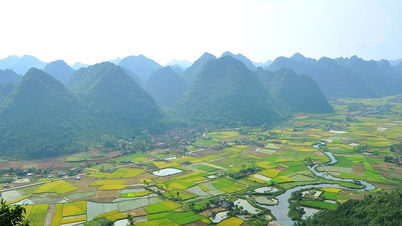

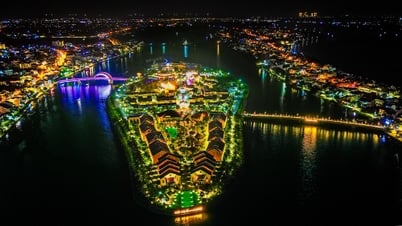



















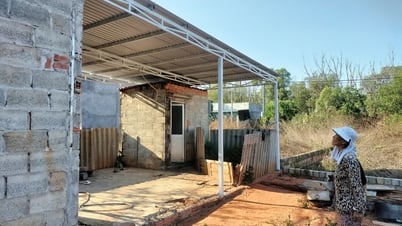





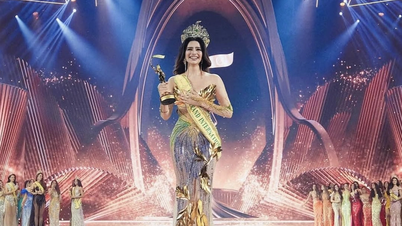



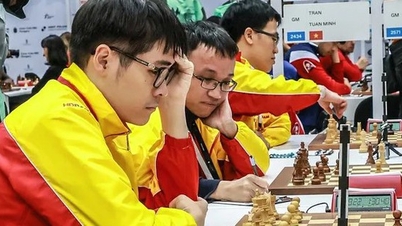












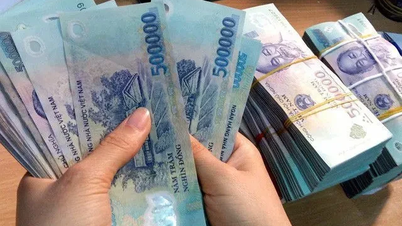









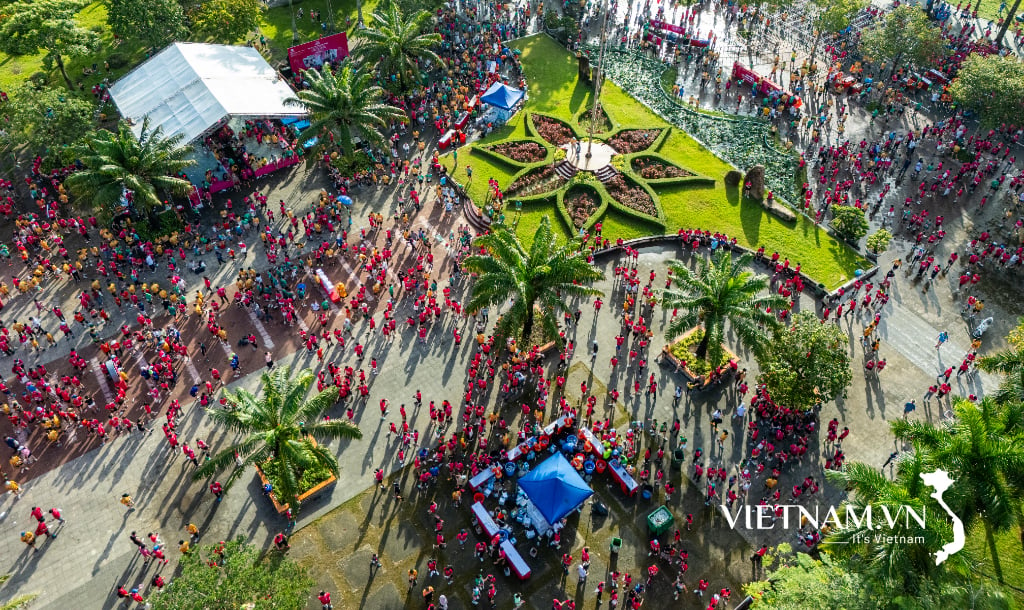
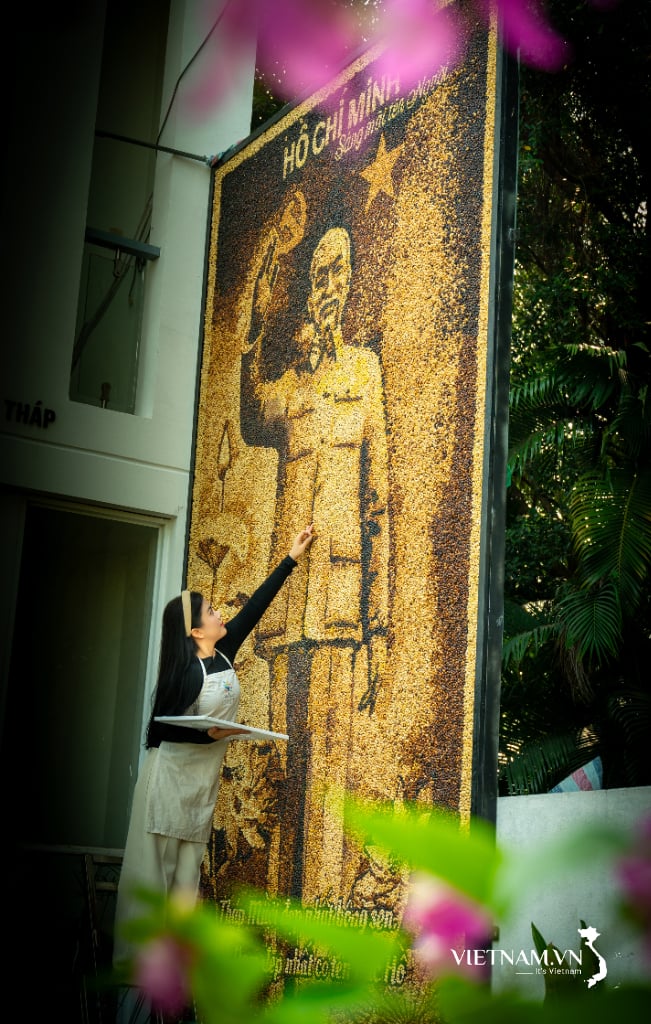

Comment (0)